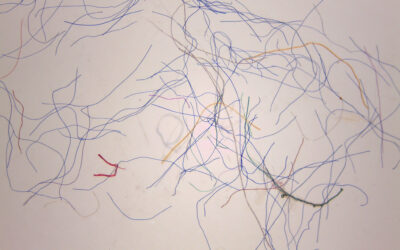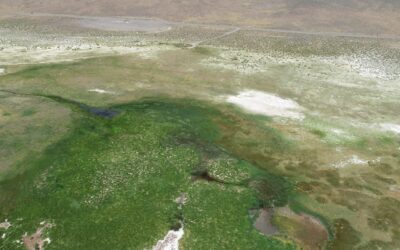New research explores the microbial communities that live on plastic waste and how they impact the 2nd most biodiverse river in the world
DRI researchers Monica Arienzo and Rachel Kozloski are co-authors on a new study that examines the ecological impacts of plastic waste in Cambodia’s Mekong River. The Mekong River is a place of rich biodiversity that supports the livelihoods of more than 60 million people, but this has also led to vast amounts of plastic pollution.
The new research, published in the August 2024 issue of the journal Water Research, found that thriving populations of bacteria living on the surface of plastic waste were significantly altering overall water quality and impacting ecosystem services, especially in areas with mismanaged waste. Additionally, the researchers observed the presence of potentially pathogenic organisms which could have implications for human health, though more analysis is necessary.
The consortium, part of the USAID-funded Wonders of the Mekong project, included researchers from the University of Milano-Bicocca; University of Nevada, Reno; Institute of Technology of Cambodia; Desert Research Institute and Royal University of Phnom Penh.
“The combination of studying four different plastics in three different rivers with the various measurement types makes this study unique,” said Monica Arienzo, associate research professor in DRI’s Division of Hydrologic Sciences. “Bringing together these data is important for understanding potential impacts of plastics to aquatic ecosystems.”
“It has been an incredible privilege to work on the Mekong River and I am proud to have contributed to the methods for this study,” said Rachel Kozloski, doctoral student in Arienzo’s Microplastics and Environmental Chemistry Laboratory. This work advances our understanding of how plastic pollution may affect the microbial community and water chemistry in freshwater systems.”
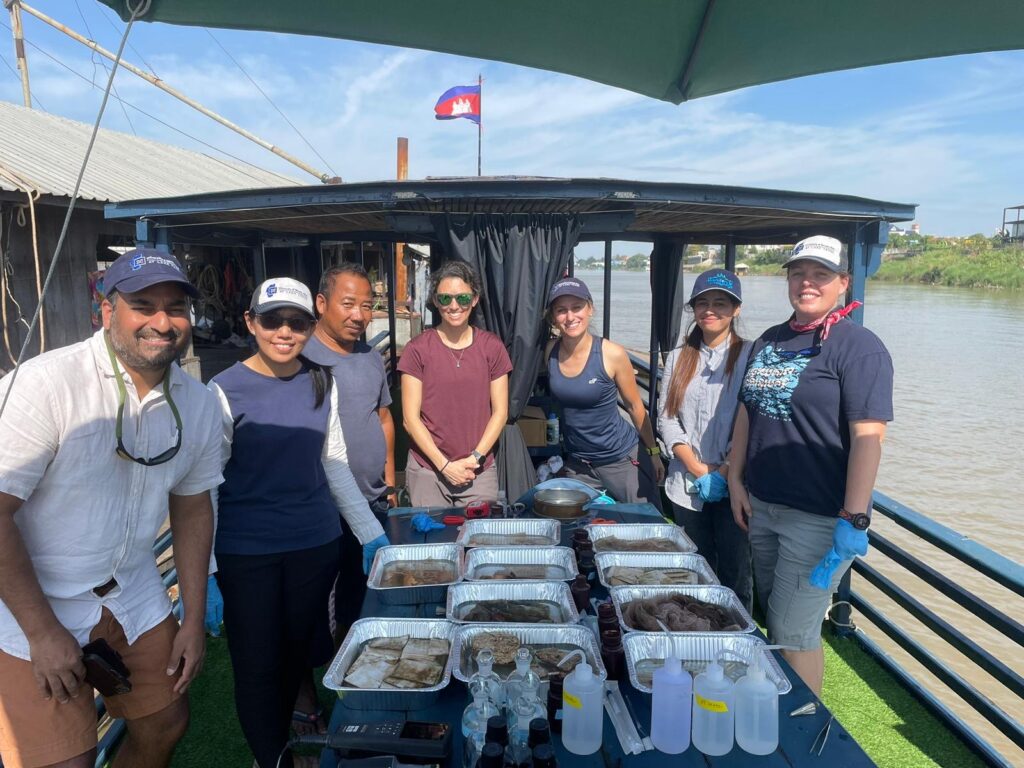
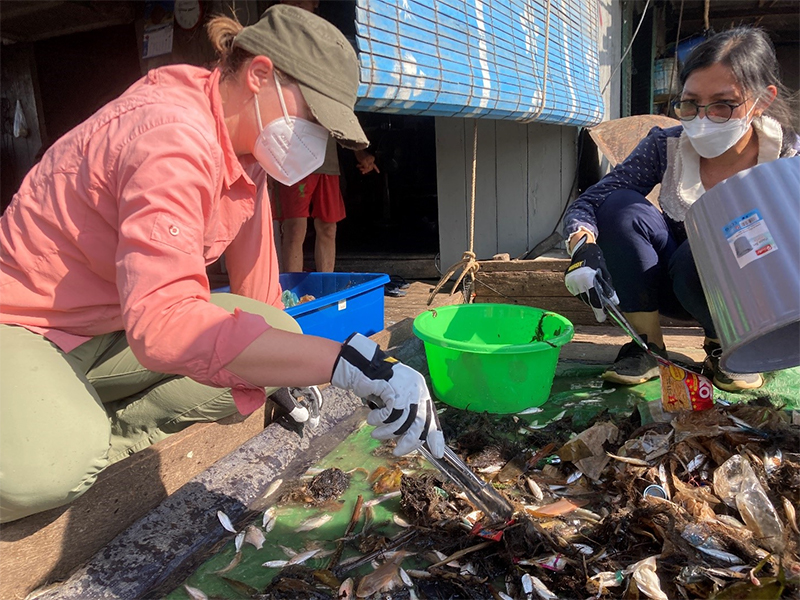
Read the full press release from UNR below:
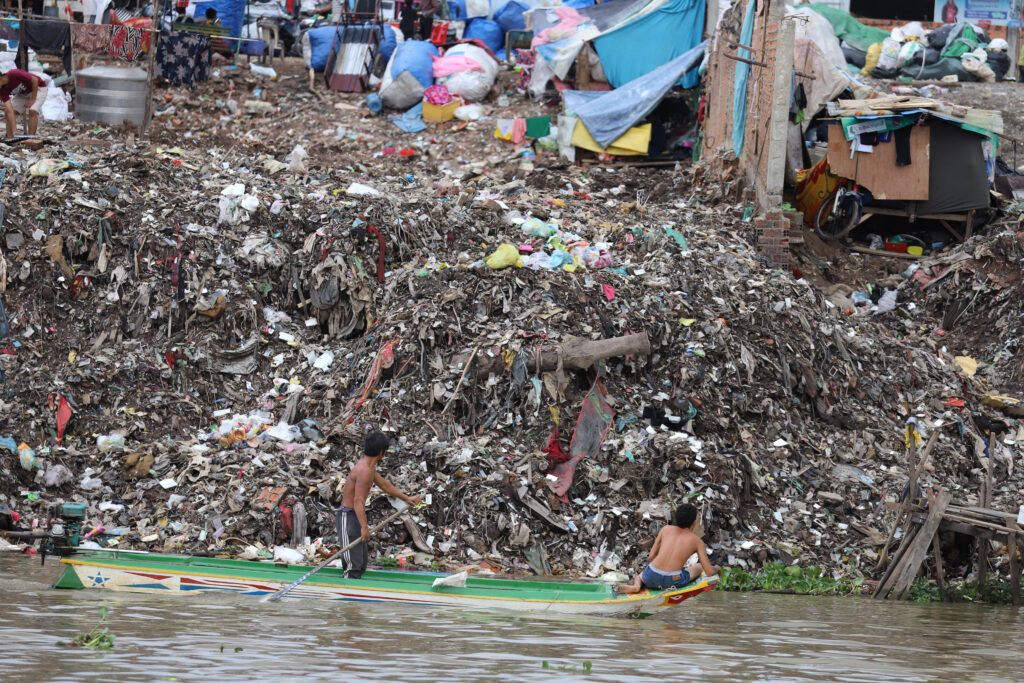
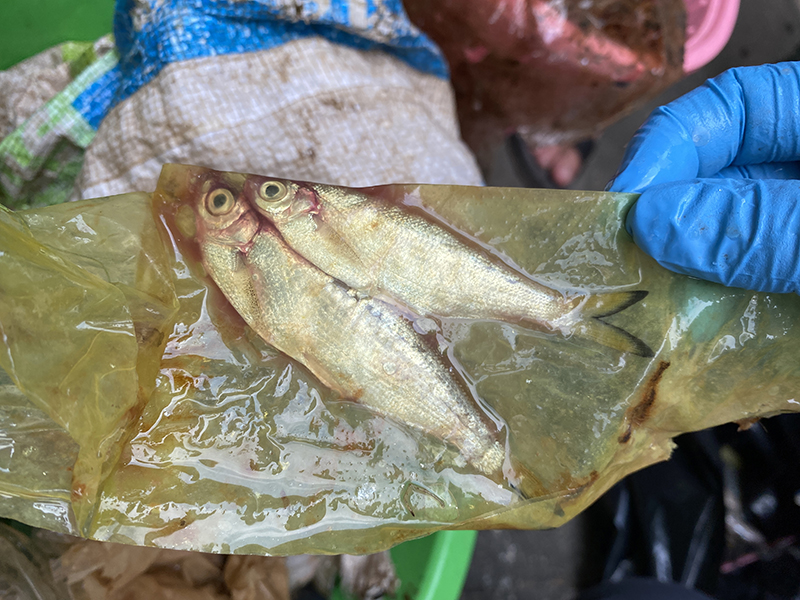
Phnom Penh, Cambodia — Polluted rivers and lakes worldwide are host to a new and evolving population of microorganisms and bacteria that have made their home on plastic waste. This new trash-loving ecosystem, dubbed the ‘plastisphere’, is causing everything from water oxygen depletion to potential disease introduction and is altering the overall health of large river systems, according to research published in the August 2024 issue of the journal, Water Research.
“Rivers provide a broad array of ecosystem services, like supplying drinking water and irrigation for growing crops to supporting inland fisheries that hundreds of millions of people use for food resources,” Veronica Nava, a scientist at the University of Milano-Bicocca and the study’s lead author, said. “Our study is one of the first to go beyond describing the small organisms growing on the different plastic materials polluting our world’s waterways to show that they are changing the cycling of nutrients in the river and are causing a dramatic reduction of oxygen in the river system. These changes impact a river’s health and ability to support biodiversity within its ecosystems.”
A consortium of research institutions analyzed the plastisphere of the Lower Mekong River system in Cambodia – one of the world’s most diverse and productive rivers. By monitoring several impacts to the rivers’ health, they found that thriving populations of bacteria living on the surface of plastic waste were significantly altering overall water quality and impacting ecosystem services, especially in areas with mismanaged waste. Additionally, the researchers observed the presence of potentially pathogenic organisms which could have implications for human health, though more analysis is necessary.
The consortium, part of the USAID-funded Wonders of the Mekong project, included researchers from the University of Milano-Bicocca; University of Nevada, Reno; Institute of Technology of Cambodia; Desert Research Institute and Royal University of Phnom Penh.
The study was multifaceted, examining accumulations of microorganisms on plastic waste found in the rivers as well as reproducing the growth of these microorganisms on plastic submerged in river water in the lab. Notably, the group looked at the microorganisms’ selectivity to try and better understand if waste type would impact their growth and productivity.
“The combination of studying four different plastics in three different rivers with the various measurement types makes this study unique,” Monica Arienzo, associate research professor in the Division of Hydrologic Sciences at the Desert Research Institute, said. “Bringing together these data are important for understanding potential impacts of plastics to aquatic ecosystems.”
While the Mekong River supports the livelihood of more than 60 million people, it also is also one of the more stressed rivers on the planet with changing hydrology due to dam development and land use impacts including deforestation, overfishing and illegal trade of giant charismatic fish across the region. The river is home to the recently discovered world’s largest freshwater fish, a giant stingray, among other rare species nearing extinction. Discarded plastic waste in the river is becoming increasingly more common, potentially impacting the rich river diversity and fishing productivity.
“The Mekong River and its tributaries are rich in biodiversity, but plastic pollution is a growing problem in the Mekong River basin, as it is in freshwater bodies around the world,” Professor Sudeep Chandra, one of the study’s authors and Director of the Global Water Center at the University of Nevada, Reno, said. “If you scale this work up, it could be that because the microorganisms inhabiting the floating rafts of plastic are reducing oxygen in the river, we’ll begin finding ‘dead zones’ where fishes and other animals can’t survive, especially during the dry season.”
The reduction of oxygen is hypothesized to also contribute to the production of greenhouse gases like carbon dioxide and methane.
“High levels of plastic pollution could yield biogeochemical hot spots for greenhouse gas production within rivers,” Chandra continues. “Simply, we cannot take the loading of plastics within freshwaters lightly as they may control so many features of rivers and affect the things we are trying to conserve.”
Rivers have frequently been studied as contributors of plastic waste to the ocean, with the world’s rivers carrying up to 265,000 metric tons of discarded plastic waste each year to the sea. This first-of-its-kind research brings to light a new set of challenges that must be addressed to protect rivers and the ecosystem services they provide. This new and growing freshwater plastisphere could have far-reaching impacts, according to the researchers:
- Water quality, oxygen and nutrient declines could impact the health of fish and other river dwellers. This is especially worrisome in rivers like the Mekong River, one of the most biodiverse and functionally important rivers worldwide.
- Bacterial and tiny algae colonization called biofilms on the plastics may encourage larger organisms to ingest the “flavored” plastic waste.
- Potentially pathogenic microbes living on the plastic may affect the drinking water supply for humans.
- Plastic trash coated with biofilms has the potential to travel far distances, expanding the geographic impact of the plastisphere as it moves downriver with currents.
In 2023, Nava and Chandra published research in Nature about the high concentrations of microplastics in freshwater lakes around the world, like Lake Tahoe in the U.S. and Lakes Lugano and Maggiore in Italy. This new research provides the first evidence of the broader ecological impacts of plastic waste in river systems and is a first step in better understanding the impacts of the plastisphere on the world’s freshwater ecosystems.
“This study highlights the surprising interconnections between plastic pollution and aquatic ecosystems and underscores the need to develop solutions to reduce plastic waste” Zeb Hogan, associate research professor in the Department of Biology at the University of Nevada Reno and Director of the Wonders of the Mekong Project, said. “Policies that reduce plastic waste will benefit people through improved ecosystem function, better water and more fish.”
The University of Nevada, Reno, is a public research university that is committed to the promise of a future powered by knowledge. As a Nevada land-grant university founded in 1874, the University serves 21,000 students. The University is a comprehensive, doctoral university, classified as an R1 institution with very high research activity by the Carnegie Classification of Institutions of Higher Education. Additionally, it has attained the prestigious “Carnegie Engaged” classification, reflecting its student and institutional impact on civic engagement and service, fostered by extensive community and statewide collaborations. More than $800 million in advanced labs, residence halls and facilities has been invested on campus since 2009. It is home to the University of Nevada, Reno School of Medicine and Wolf Pack Athletics, maintains a statewide outreach mission and presence through programs such as the University of Nevada, Reno Extension, Nevada Bureau of Mines and Geology, Small Business Development Center, Nevada Seismological Laboratory, and is part of the Nevada System of Higher Education. Through a commitment to world-improving research, student success and outreach benefiting the communities and businesses of Nevada, the University has impact across the state and around the world. For more information, visit www.unr.edu.
Media Contact:
Jennifer Kent
Director of Marketing & Communications
Office of the Provost
jenniferkent@unr.edu
Office: 775-682-8516
Cell: 775-762-0885
Nevada Today: www.unr.edu/nevada-today

